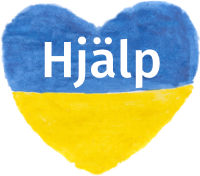Zagreb is the capital and the largest city of the Republic of Croatia. It is situated in the northwest of the country, along the Sava river, at the southern slopes of the Medvednica mountain. Zagreb lies at an elevation of approximately 122 m (400 ft) above sea level. In 2008, Zagreb population was 804,200
Its favourable geographic position in the southwestern part of the Pannonian Basin, which extends to the Alpine, Dinaric, Adriatic and Pannonic regions, provides an excellent connection for traffic between Central Europe and the Adriatic Sea.
The transport connections, concentration of industry, scientific and research institutions and industrial tradition underlie its leading economic position in Croatia. Zagreb is the seat of the central government, administrative bodies and almost all government ministries.
Tourism
Hotel Esplanade/RegentZagreb is an important tourist center, not only in terms of passengers travelling from Western and Central Europe to the Adriatic Sea, but also as a travel destination itself. Since the end of the war, it has attracted around half a million visitors annually, mainly from Austria, Germany and Italy. However, the city has even greater potential as many tourists that visit Croatia skip Zagreb in order to visit the beaches along the Croatian Adriatic coast and old historic Renaissance cities such as Dubrovnik, Split, and Zadar.
The historical part of the city to the north of Ban Jelačić Square is composed of the Gornji Grad and Kaptol, a medieval urban complex of churches, palaces, museums, galleries and government buildings that are popular with tourists on sightseeing tours. The historic district can be reached on foot, starting from Jelačić Square, the center of Zagreb, or by a funicular on nearby Tomićeva Street.
Souvenirs and gastronomy
Numerous shops, boutiques, store houses and shopping centers offer a variety of quality clothing. Zagreb's offerings include crystal, china and ceramics, wicker or straw baskets, and top-quality Croatian wines and gastronomic products.
Notable Zagreb souvenirs are the tie or cravat, an accessory named after Croats who wore characteristic scarves around their necks in the Thirty Years' War in the 17th century and the ball-point pen, a tool developed from the inventions by Slavoljub Eduard Penkala, an inventor and a citizen of Zagreb.
Many Zagreb restaurants offer various specialities of national and international cuisine. Domestic products which deserve to be tasted include turkey, duck or goose with mlinci (a kind of pasta), štrukli (cottage cheese strudel), sir i vrhnje (cottage cheese with cream), kremšnite (custard slices in flaky pastry), and orehnjača (traditional walnut roll).
Plats: Zagreb, Kroatien
